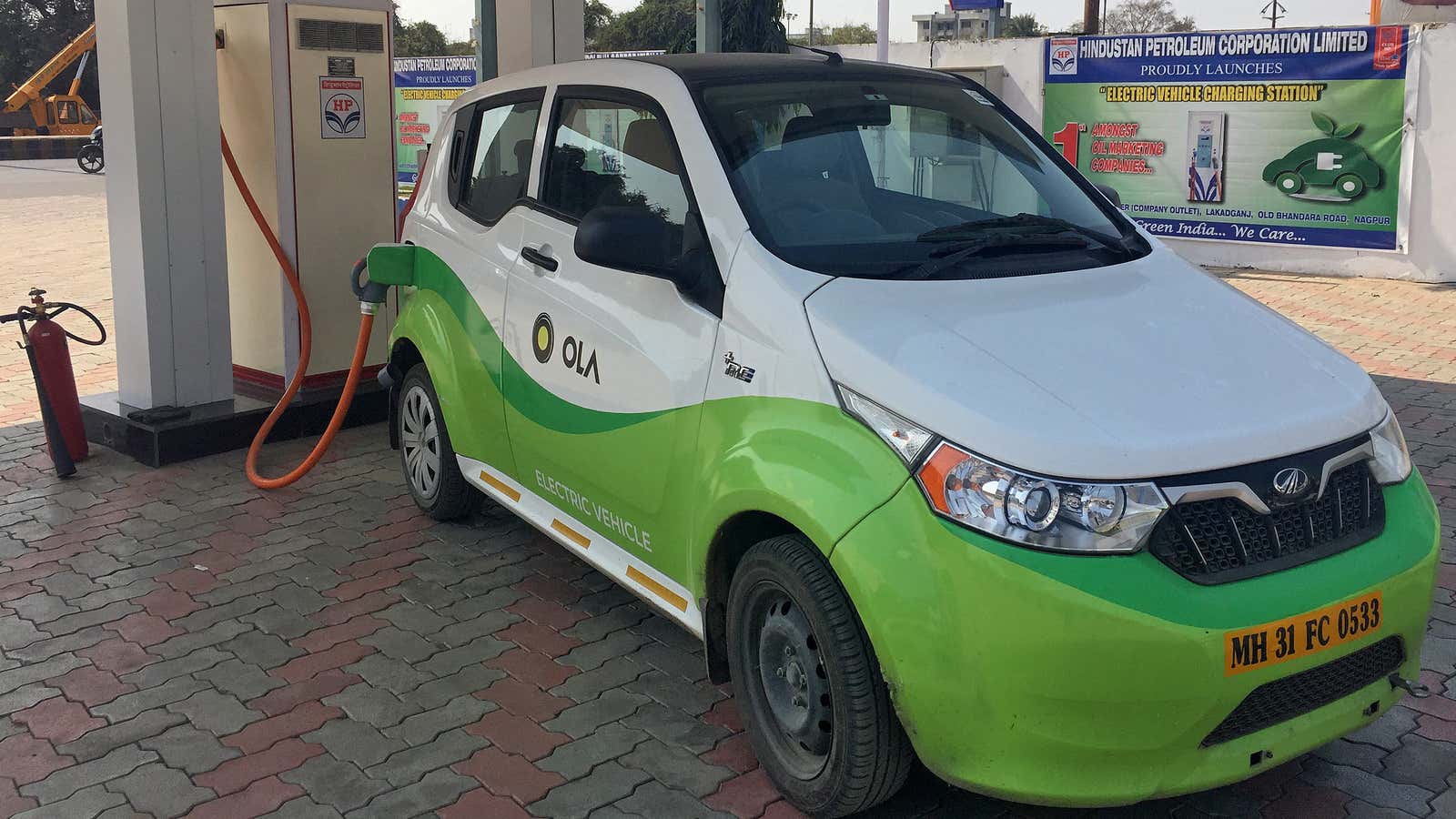India’s drive towards electric vehicle (EV)-led mobility has accelerated in recent years, but the plan raises more environmental questions than it answers.
For one, the charging infrastructure is expected to be heavily reliant on coal-based power, indirectly increasing the emission of greenhouse gases. Then, there’s the bigger question of what to do with the heap of electronic waste generated from worn-out lithium-ion (Li-ion) batteries, which power EVs.
“Changing to batteries charged by thermal power will not reduce an iota of pollution,” TVS Motor chairman and managing director (CMD) Venu Srinivasan had asserted last month.
The Indian government, though, is pacing up the transition, unfazed by the emerging concerns.
On July 27, the Narendra Modi government decided to more than halve the goods and services tax (GST) on EVs from 12% to 5%. It also slashed the GST on EV chargers from 18% to 5%. The new rates will be effective from Aug. 1, 2019.
Government think tank Niti Aayog recommended on June 11 that only electric three-wheelers should be sold in the country by 2023. It also advocated that all two-wheelers, with an engine capacity below 150cc, should necessarily be electric by 2025.
This is in line with the Modi government’s ambitious plans to increase the share of EVs on Indian roads to 80% in the case of two-wheelers and 30% for private cars by 2030.
Yet, how green is this transition?
Challenges ahead
Without a parallel push towards green methods of power generation to charge EVs, the gains from lower vehicular pollution may be offset.
“Even if the number of EVs increases sharply by 2050, it will still not be sufficient to reduce the emission of air pollutants like carbon dioxide, sulphur dioxide, and nitrous oxides. There is a need to do a lot more to improve mass transportation and therefore reduce vehicular traffic,” Sunil Gupta, MD and CEO of car rental firm Avis India, a joint venture between the Oberoi group and Avis Budget group, told Quartz.
Despite the push towards solar and wind energy projects, coal may still account for half of India’s power generation by 2030, according to an estimate by the central electricity authority (CEA).
EV adoption alone, therefore, will not suffice in controlling air pollution. “There is a need to do a lot more to improve mass transportation and therefore reduce vehicular traffic,” said Gupta.
Another major gap is creating the recycling infrastructure for spent Li-Ion batteries, which have an estimated life of five to ten years. This is something even developed nations are struggling with.
For instance, the Europe Union recycles only 5% of discarded Li-ion batteries, an estimate showed, because of the complexity and expenses involved in the process. As a result, most of the discarded batteries end up in waste dumps.
“India does not yet have a mature ecosystem that can ensure 100% formal recycling of Li-ion batteries,” said Gupta. “As EVs based on Li-Ion batteries become more commonplace, this issue will acquire greater urgency. Certain ‘second life’ use cases, such as stationary energy storage (to store renewable energy), can also be explored for Li-Ion batteries used in electric vehicles.”
